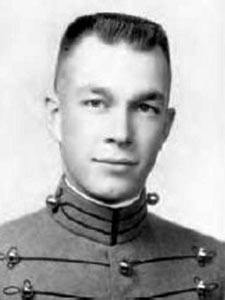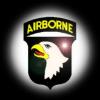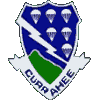| |
|
|
|
Len Martin Hanawald
Lieutenant Colonel
HHC, 2ND BN, 506TH INFANTRY, 101ST ABN DIV, USARV Army of the United States Albuquerque, New Mexico September 09, 1935 to September 03, 1969 LEN M HANAWALD is on the Wall at Panel W18, Line 28 See the full profile or name rubbing for Len Hanawald |

   |

|



| |
|
LTC Len Hanawald was a very impressive officer when he reported into the 2nd Battalion 506th Infantry in the late Spring of 1969 as the new Battalion Commander. I was a very young Company Commander (22 years old - OCS Graduate) on my second tour, and just adjusting to my new responsibilities when Len Hanawald arrived at Camp Evans (about an hour north of Hue) in I Corps. At that time the Battalion and Brigade Commanders in the 101st Airborne were allowed to select their own call signs, and our new commander selected "Airborne". Such a macho call sign seemed a little silly, since he was such a small guy, maybe five foot five, and weighed maybe 120 pounds soaking wet. But Len Hanawald had served his first Viet Nam tour with Special Forces, and it was clear from the first day that he understood the "ins and outs" of small unit tactics. "Airborne" was also a officer who didn't hesitate to pack his rucksack and spend a few days "in the field" with his rifle companies. He was small and wiry, but he was as strong as barbed wire. Normally Battalion Commanders lived on the Fire Support Bases with the Battalion Headquarters, which were "rustic" to say the least. But on the Fire Bases at least you had a dry place to sleep at night, one hot meal a day, and place to wash up. But going "to the field" with a rifle company meant giving up those "luxuries". Everything you owned, you carried on your back in your rucksack, and normally the only uniform you had was the one you were wearing. If you were lucky your company found time once a week to stop in a local stream, set up security, so everyone could bath (in shifts naturally) and wash their fatigues. Len Hanawald was also unusual in that he talked to everyone, officers, sergeants and soldiers. And even more important he listened to everyone, and was able gather many good ideas from these conversations. He was very approachable, and when you were talking with him, he always made you feel very comfortable and important. Len was a natural teacher and coach, and helped many of us not in our military duties but also in other parts of our lives. "Airborne" made a huge difference in the Battalion, not only in more effective military operations, but also in the "organizational culture". It was a very positive organization, a true "band of brothers", and we were all very proud to be members. In early September 1969 "Airborne" was killed during an aerial reconnaissance mission. Generally Battalion Commanders didn't take part in this type of front line mission, but "Airborne" was a different type of Battalion Commander. He was always trying to see what was happening with his own eyes, so he could make the best plans for "his boys". There were only two in that observation helicopter: the pilot, and Len Hanawald who was acting as the observer/gunner. They were scouting an area along the base of the mountains to the west of Camp Evans, when they discovered a Viet Cong guerrilla in the high grass. The helicopter was only 20-30 feet off the ground, and "Airborne" had this VC guerrilla covered with his M-16, and could have easily killed him by just squeezing the trigger. But "Airborne" always told us that prisoners are more valuable than bodies, so he was intent on capturing this guerrilla. "Airborne" wanted to give the pilot instructions to land, but was having trouble finding the microphone button (located on the floor in this helicopter) and he took his eye off of the guerrilla for just a second. But just a second was all the time it took for this Viet Cong to reach down and pick up his AK-47 rifle and spray the small helicopter with 30 rounds of automatic fire. "Airborne" was hit more than once in the torso, but the pilot only had minor scrapes and was able to fly the damaged helicopter back to the medievac hospital at Camp Evans. Len Hanawald was still alive when they got to the Medievac Hospital, but he had lost too much blood, and died on the operating table. It was a sad day. Each of us felt that we had lost not only a Commander, but a man who truly understood us, and cared for us. A good man, gone too soon. Len died in September of 1969, but his example lives on with all of his military brothers.
James Stevens Roach 25 Jun 2007 This is an email correspondence from Ronnie Rondem to Jennifer Hanawald, LTC Hanawald's daughter, on 26 September 2006:
Ronnie B. Rondem |
A Note from The Virtual WallLTC Hanawald was graduated from the US Military Academy at West Point in 1957 and completed both Airborne and Ranger training. In 1964 he completed Special Forces qualification and began his first tour in Vietnam in 1965. On completion of his tour he attended Command and General Staff College and was then assigned to the HQ US Army staff. After early selection for promotion to Lieutenant Colonel, he volunteered for a second tour in Vietnam, arriving in-country on 06 May 1969. LTC Hanawald reportedly was awarded four Silver Stars for personal valor in combat. He is buried in Site 189-5, Section 46, Arlington National Cemetery. |
| Contact Us | © Copyright 1997-2019 www.VirtualWall.org, Ltd ®(TM) | Last update 08/15/2019. |